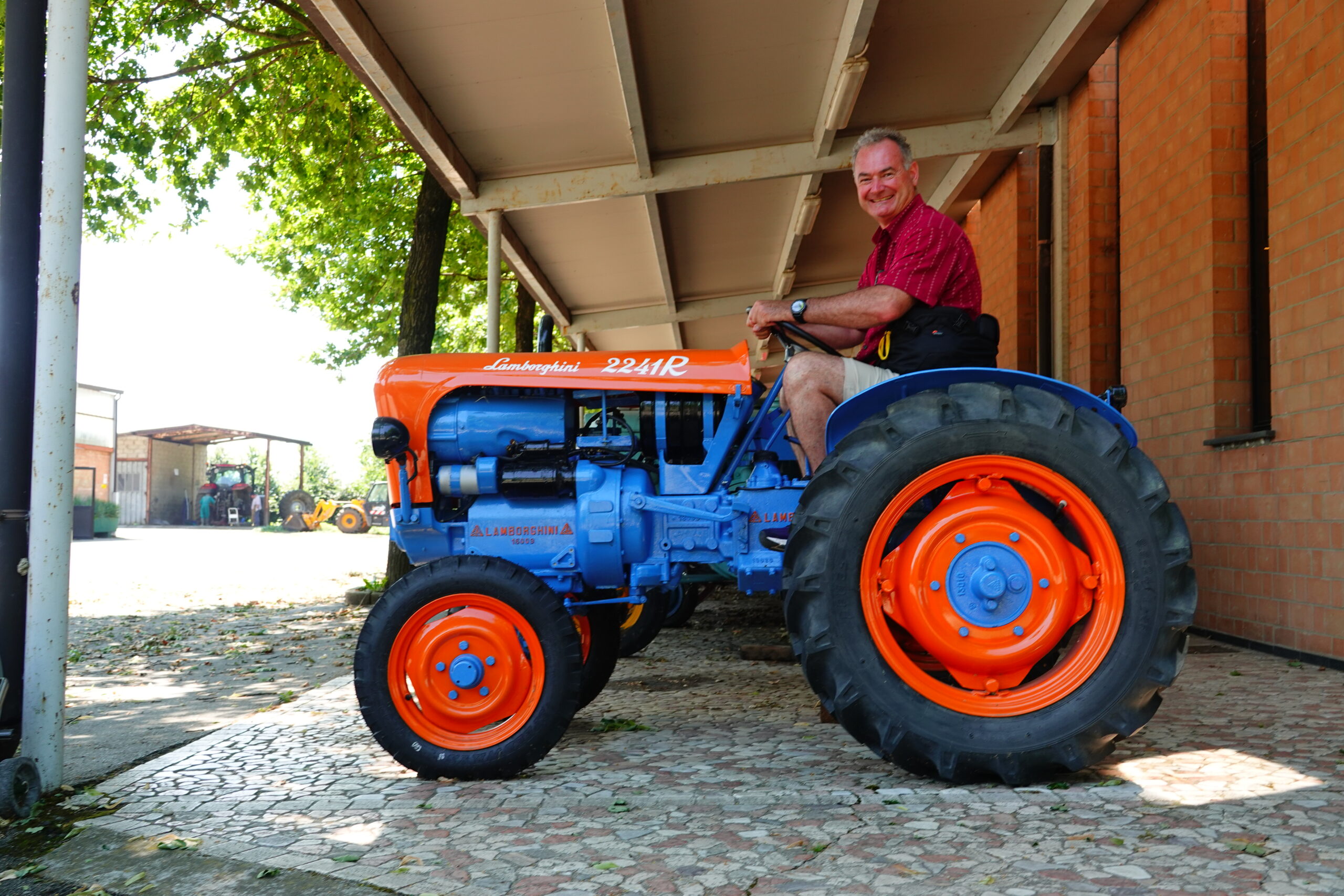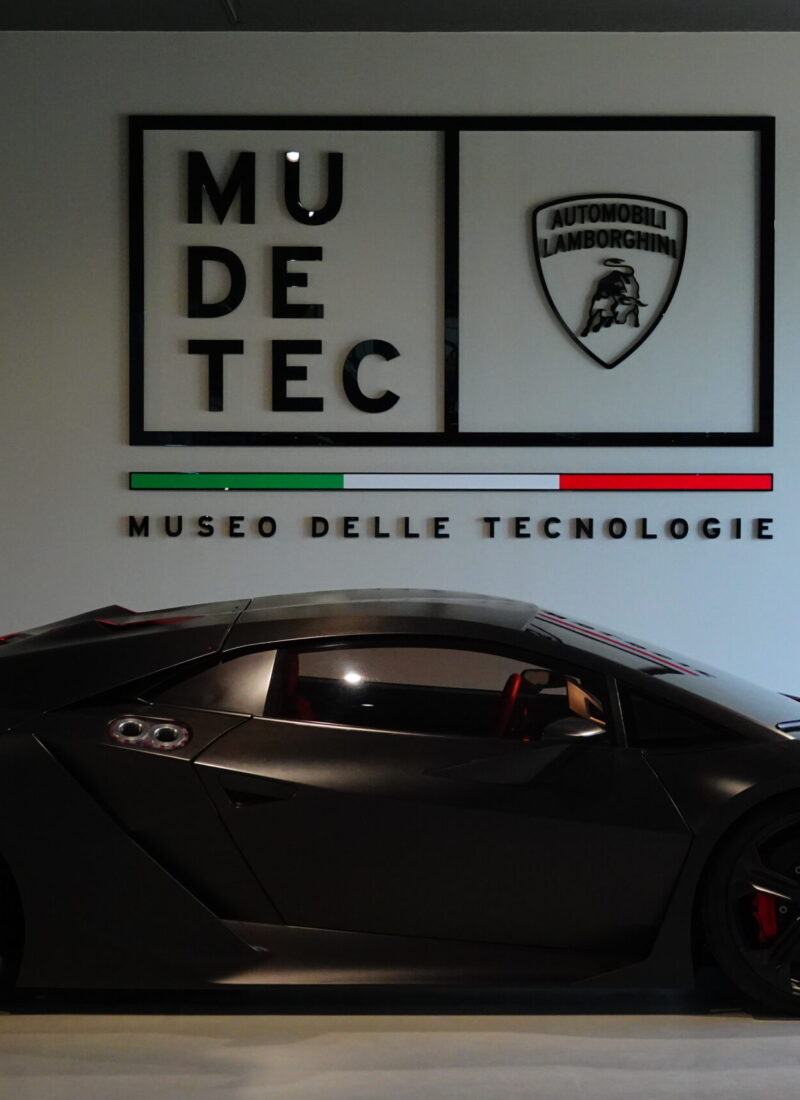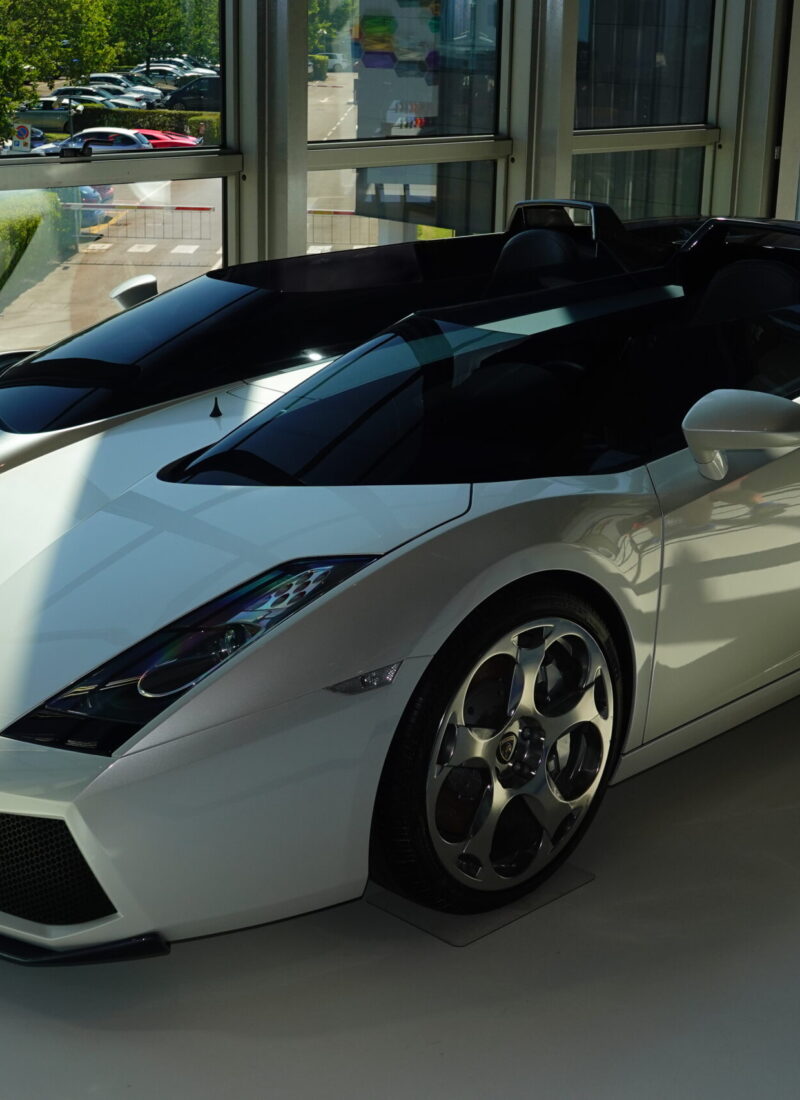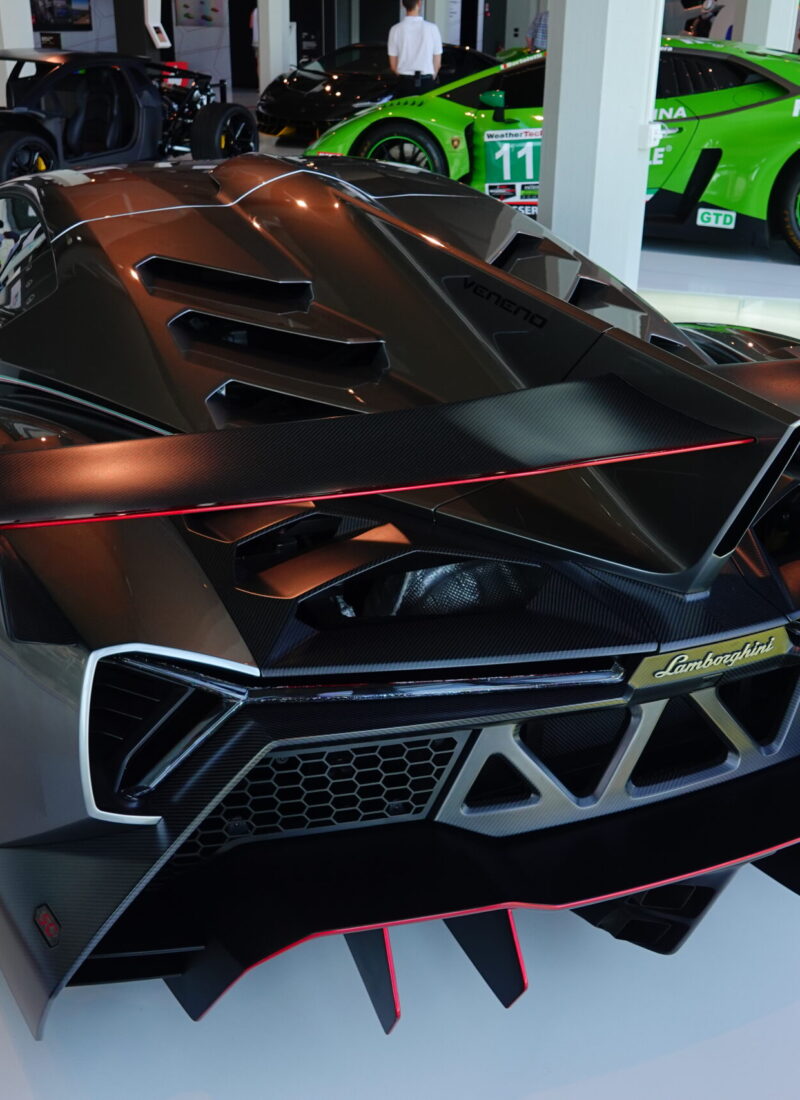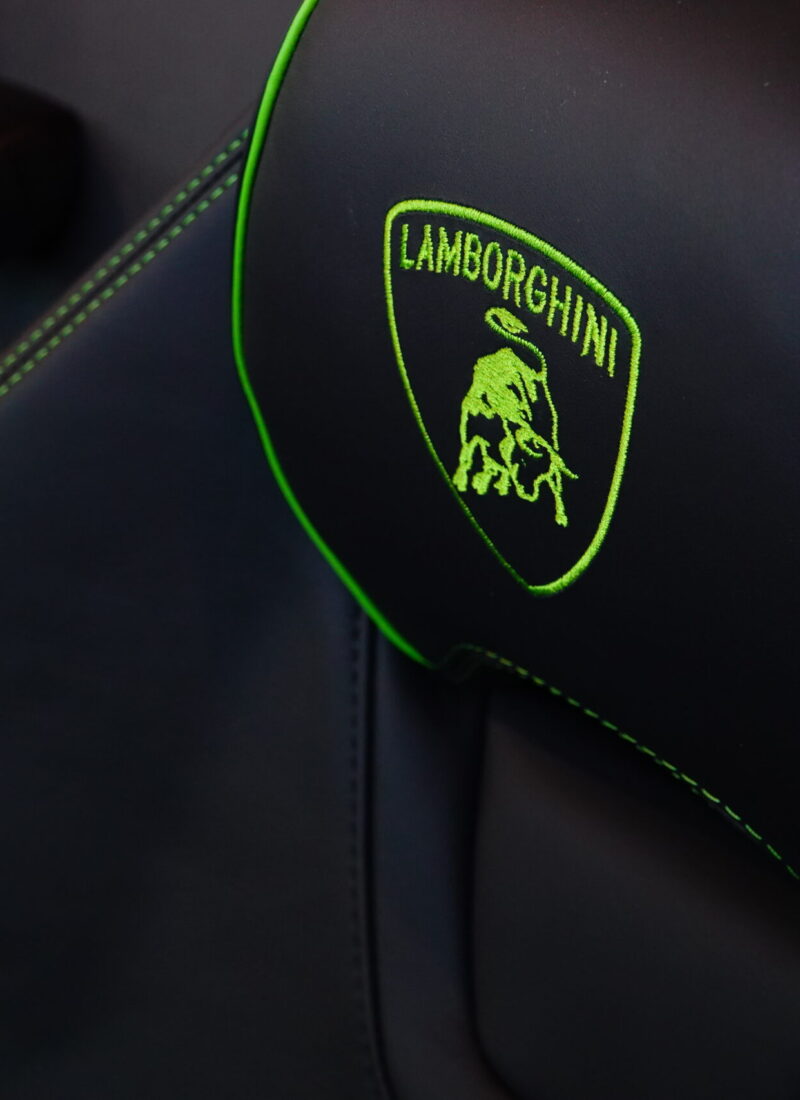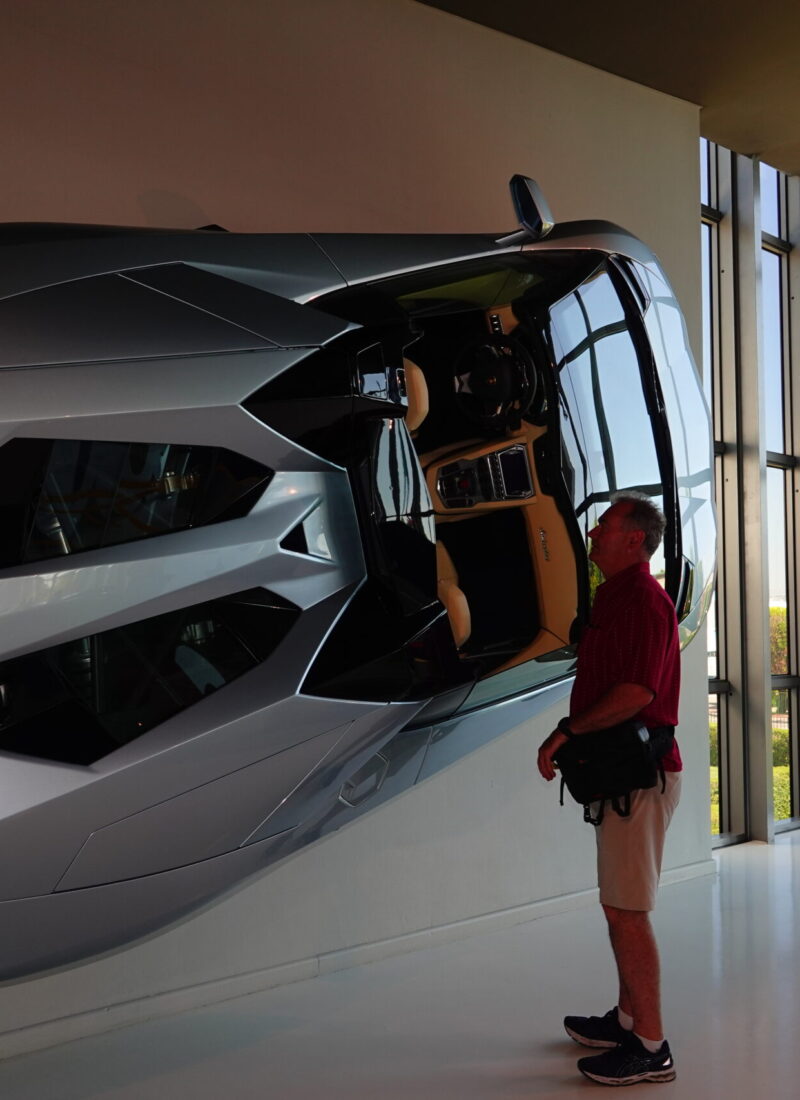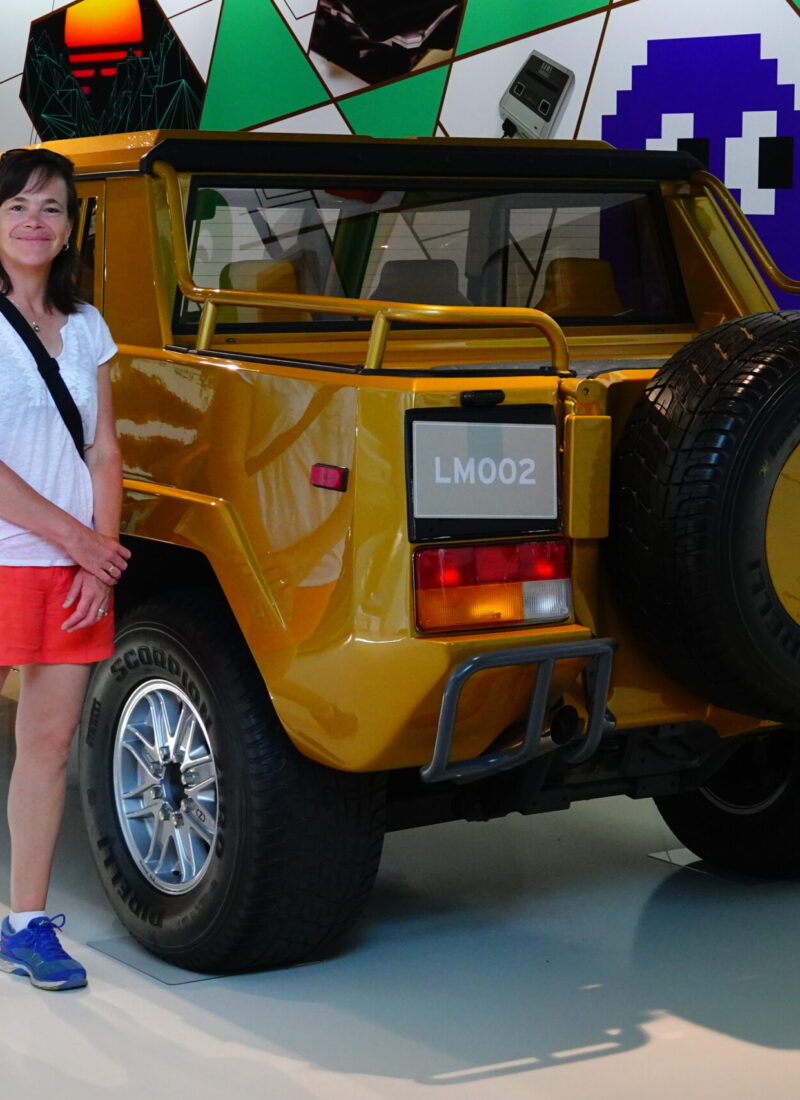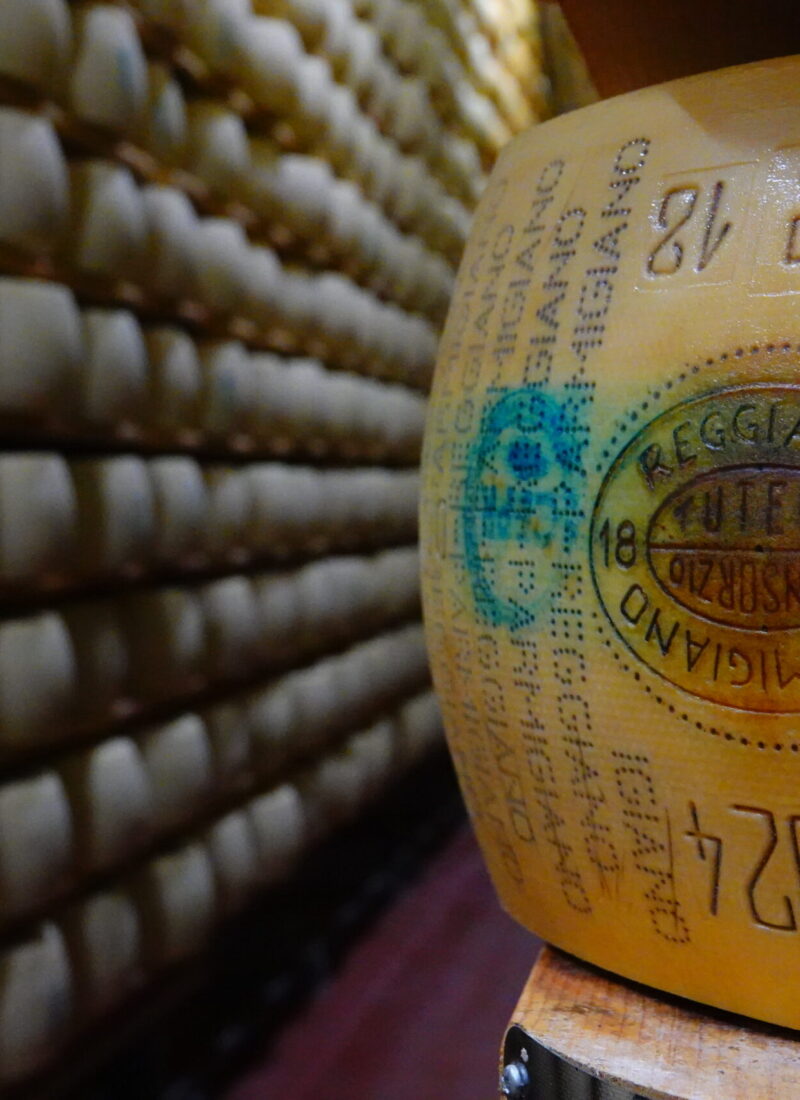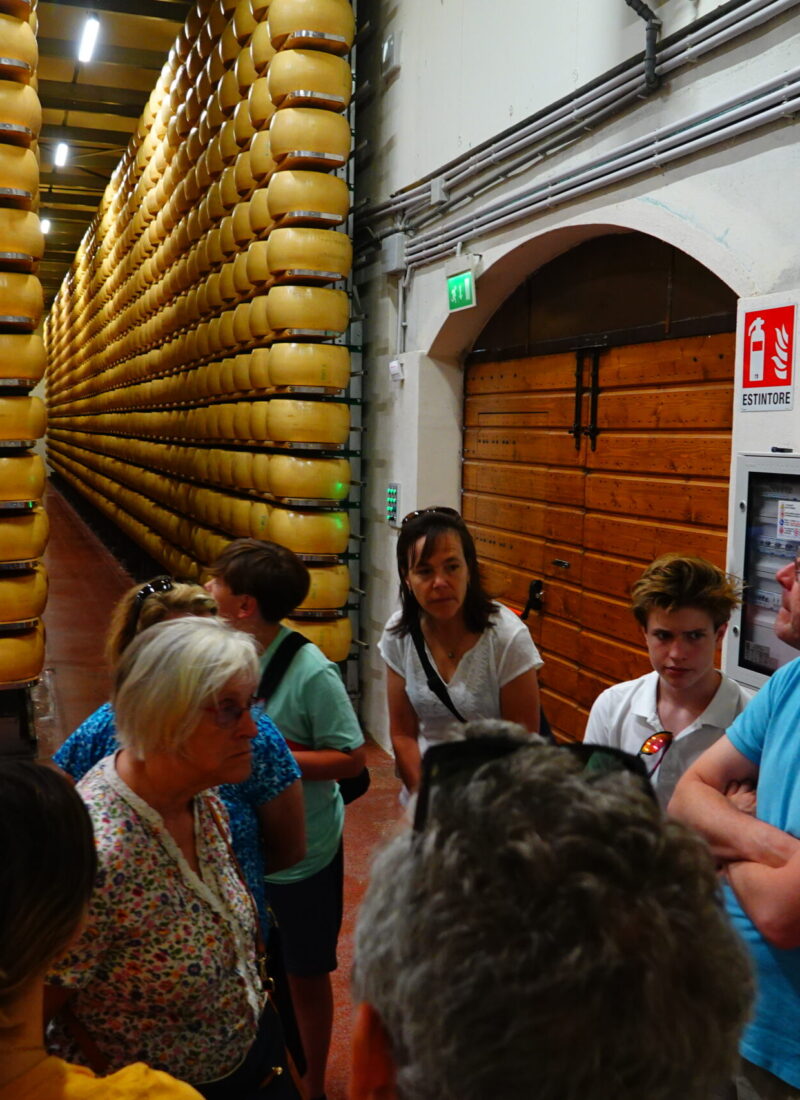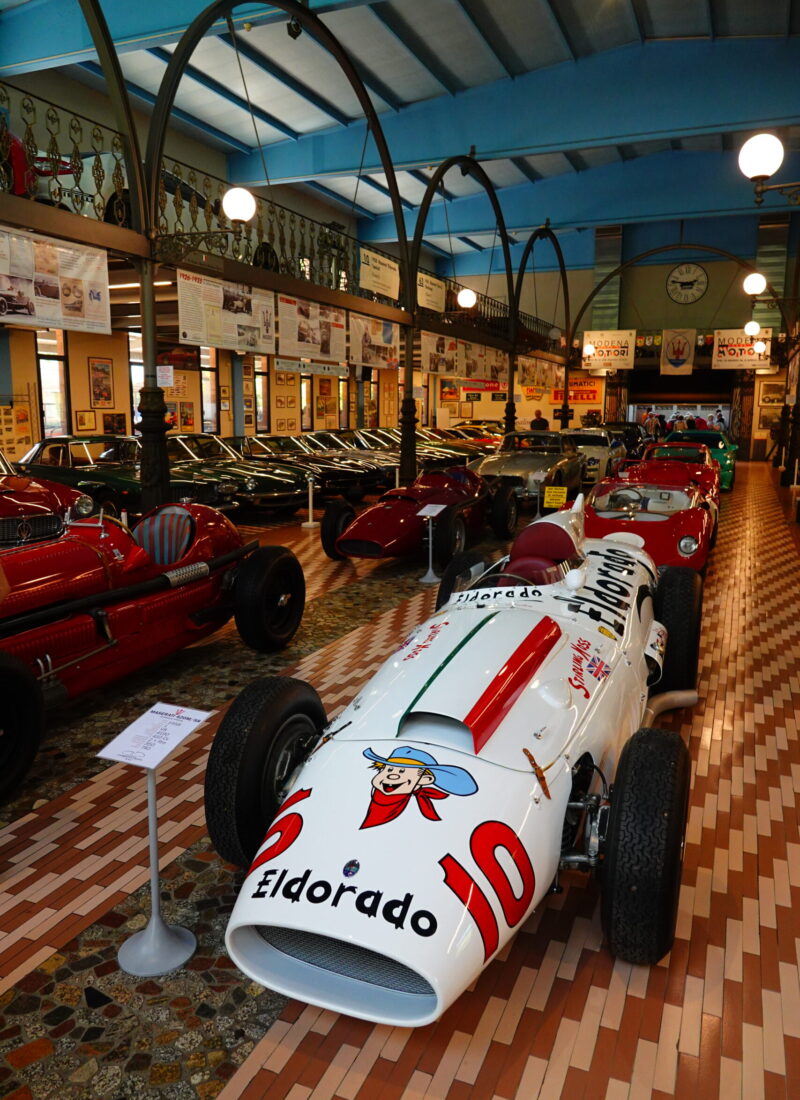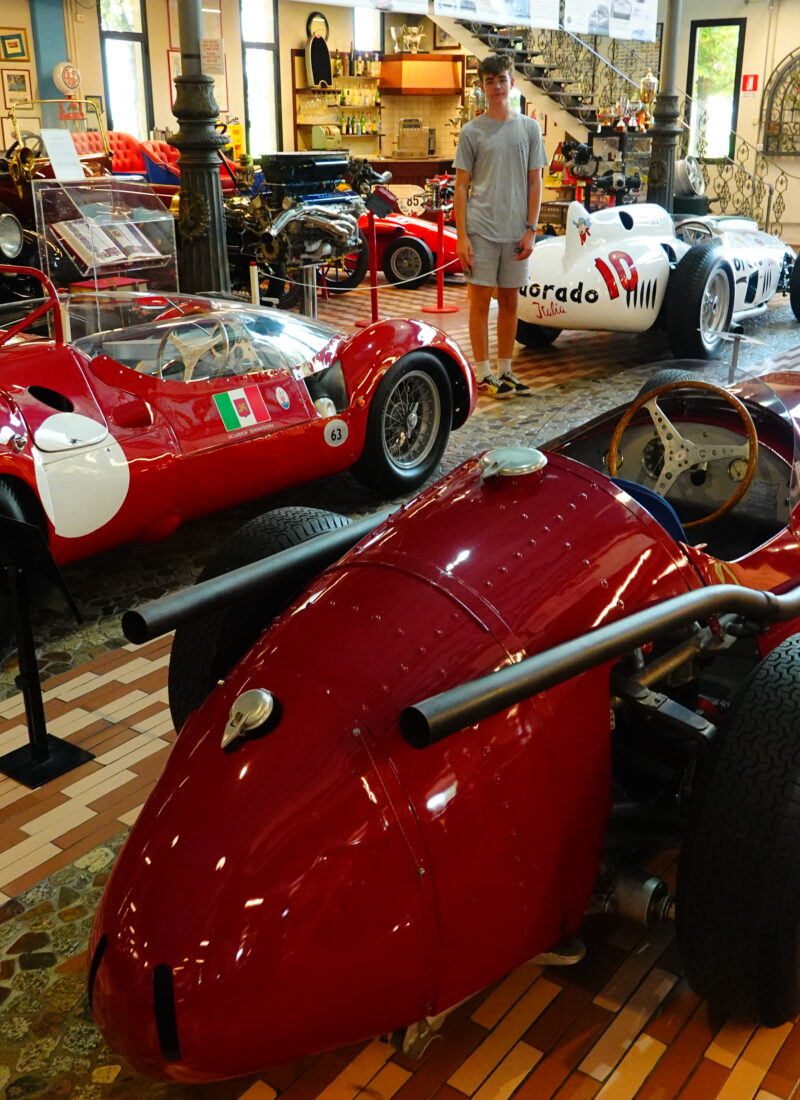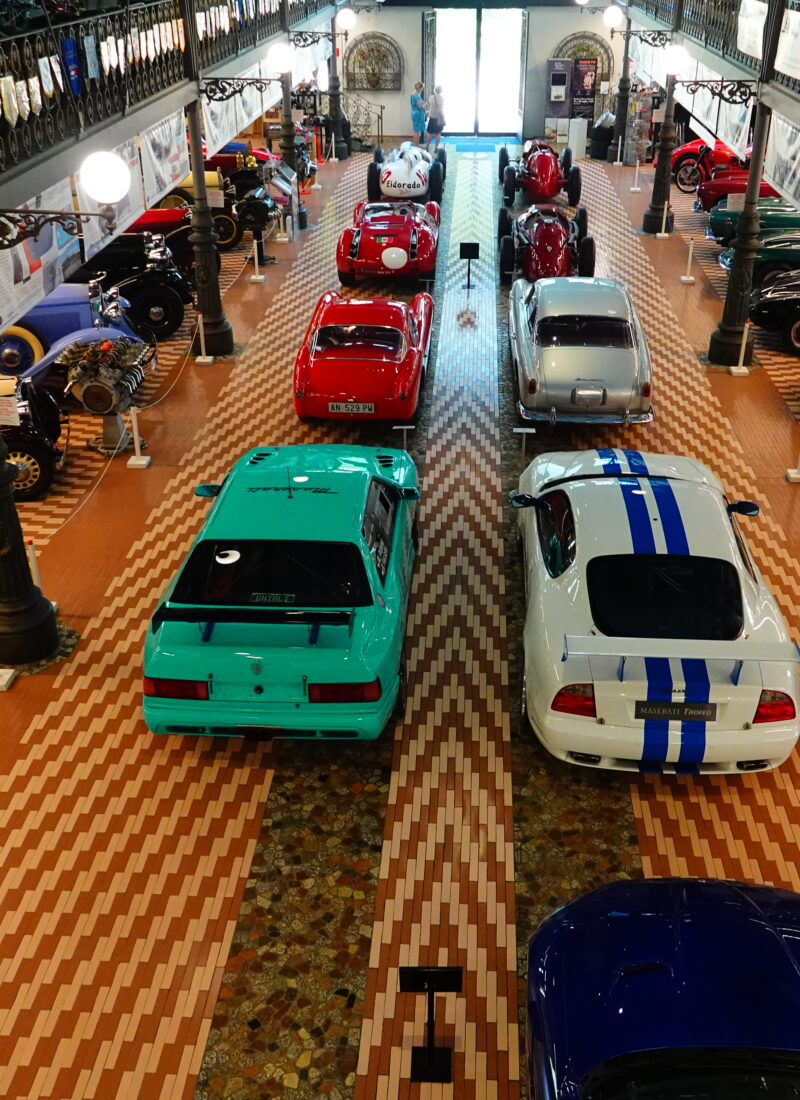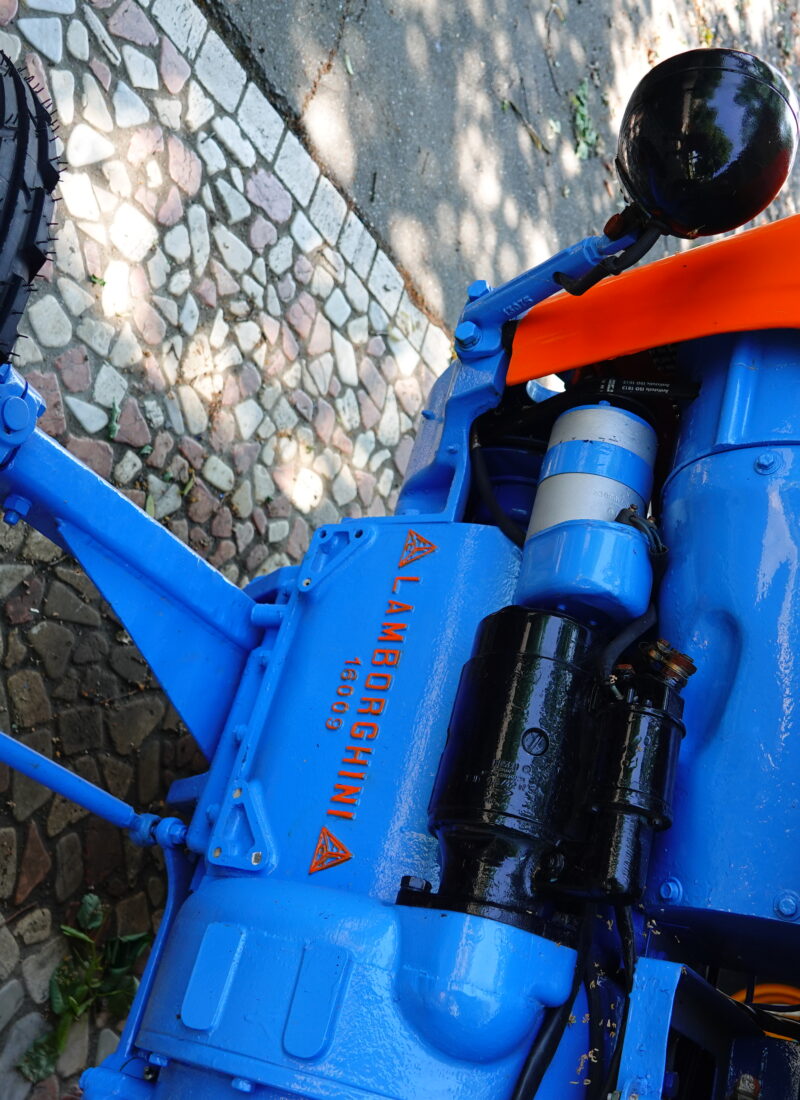Its almost a 5 hour drive from Venice on the east coast to Vernazza in the Cinque Terre region on the west coast of Italy. A break somewhere in the middle is definitely needed, and Modena seemed to fit the bill. Wow, were we surprised what we found there!
Where are we on our road trip through Northern Italy?
Milan ➔ Como ➔ Sirmione ➔ Verona ➔ Venice ➔ Murano ➔ Burano ➔ MODENA ➔ Vernazza ➔ Pisa ➔ Florence ➔ San Gimignano ➔ Volterra ➔ Siena ➔ Assisi ➔ Civita di Bagnoregio ➔ Orvieto ➔ Mostri Park ➔ Sorrento ➔ Pompeii ➔ Herculaneum ➔ Amalfi ➔ Rome ➔ Malpensa
We picked up the rental car just outside Venice near the cruise ship area, and hit the road. Google maps said we could do it in just under 5 hours IF we didn’t stop and IF Mario or Enzo (or add your favorite Italian race car driver), or Frank from Florida (random tourist name), didn’t decide to disassemble their cars in a traffic ‘incident’ along the way. If there were accidents, then that 5 hours could easily turn into 7 or 8 hours. Either way after driving for 2 hours, the Modena area would be a great place to stop. So what was there in Modena to see? Well to the east is of course the Lambo museum (Museo delle Tecnologie Automobili Lamborghini), something I know the ‘boys’ would look forward to. But Sarah also needs to have something of interest provided for her, so how about visiting the cheese making farm ‘Hombre’ to the west of Modena which would be of interest of all of us?
‘Hombre turned out to be the best call of the day!
An interesting start …
In 1948 after the war, Ferruccio Lamborghini formed a company to build tractors using left over WW2 army truck parts. After the war the parts were easy to come by and were cheap so he had to build his tractors with utmost reliability to differentiate from the competition and stay in business. He really was an engineer at heart and designed his tractors with a radical new technology, … being able to start his tractors with a petrol engine and then when running the main engine would run on diesel.
Legend has it that as money from the tractor business started to pour in, Ferruccio splashed out on a new toy, a new Ferrari 250GT!
After driving his Ferrari for a while his engineering background made him realize that there was a significant design flaw in the drive mechanism of the Ferrari, particularly the clutch. The 250GT sported a V12, 3 liter engine that pumped out almost 300 hp @ 7500 rpm, and the clutch was designed too small for all of this power. If you didn’t feather the clutch when changing gears, all of this power would rapidly destroy it. When racing cars, you dont feather the clutch, you drop it hard to get the power to the back wheels fast to aid acceleration.
Ferruccio knew what the design issue was and knew how to fix it, and in 1962 made his way to the ‘House of Ferrari’ to let Enzo Ferrari know how his cars could be improved.
Lets just say that the meeting didnt go so well. The tractor manufacturer telling a super car manufacturer how he should build his sports cars, was a little too much for Enzo and he told Ferruccio that the fault rested with the drivers abilities, rather than the cars construction (it was a little more of a heated conversation than that).
Lamborghini knew he could do better, so he founded a company to do so, and in 1963 the first Lamborghini supercar, the 350TGV, rolled off the production line.
The Museum itself looks pretty industrial, but that is what it makes it authentic as the cars are actually built on site. You can take in the museum at your leisure, of for more money you can have a tour of the factory and production facilities. If you don’t have to drive across Italy from one coast to the other on a single day, you could easily do the longer factory tour, but for us, we didn’t have time and opted to check out what the museum offered.
We expected a larger collection of cars on display quite frankly. but what was there was varied and interesting, and had SUVs, pickup trucks, carbon fiber, and concept supercars. What it didn’t have, that I REALLY wanted to see, was what we accidently discovered in .. the Hombre cheese farm!
From the Lamborghini museum it was a short 30 minute drive to ‘Hombre’.
About a 30 minute drive from the Lamborghini museum on the ‘other’ side of the city of Modena, you will find ‘Hombre’ a small farm and parmiggiano reggiano cheese manufacturer where they have tours demonstrating the entire cheese production process.
Parmiggiano Reggiano is a hard, highly nutritious, lactose free cheese and also the most common type of cheese found in all of Italy. It has high quality control and is guaranteed to be free of additives and preservatives. It ages well and takes a minimum of 12 months before it gets prepped for sale. It is also a cheese that has different characteristics of flavor and aroma and is sold in 18 month, 22 month, and 30 months ‘vintages’. The longer it ages, the harder it gets, and stronger the flavor.
This organic farm has started off with 30 hectares and has grown to 500 hectare today. There is a cute gift shop that serves snacks, ice cream and drinks on a hot day.
Though the farm and cheese making process is wonderful to see, what I found even more fascinating is the Panini Motor Museum.
Maserati was founded in Bologna in 1914 by Alfieri Maserati as a car repair workshop. In 1937, the Maserati brothers sold their shares in the company to the Adolfo Orsi family, who in 1940, relocated the company headquarters to their home town of Modena. Since that date an organic collection of various Maserati cars has grown and been put on display. The collection now totals 19.
The Maserati company has passed through many owners Citroën, FIAT, Ferrari, De Tomaso Group and even Chrysler at one stage owned a bit of the company. The company ran into trouble and in 1996 some of Maserati’s assets were being liquidated and the 19 cars were sent to England to be sold at auction in London.
The sale of the collection and loss of some of Modenas heritage prompted local authorities to find a solution, and the local Panini family was approached to be part of that solution. They had the money and they had the farm land to house them. Umberto Panini, the patriarch of the family immediately stood up, the auction was cancelled, and the collection remained in Modena and is known as the ‘Umberto Panini Collection’ today.
There is a lot more to the museum than just the Maserati’s. There is a fantastic collection of motorcycles as well as other race cars, and for me the biggest surprise of all was finding one of the original Lamborghini tractors!
Note: The Ferrari Museum is close by too, so if you have the time, you may want to check that out too!

